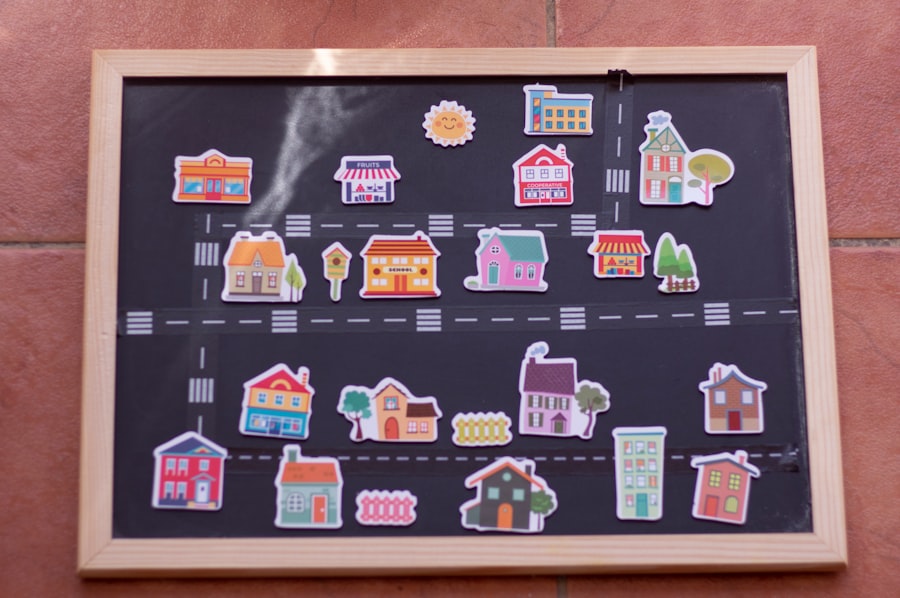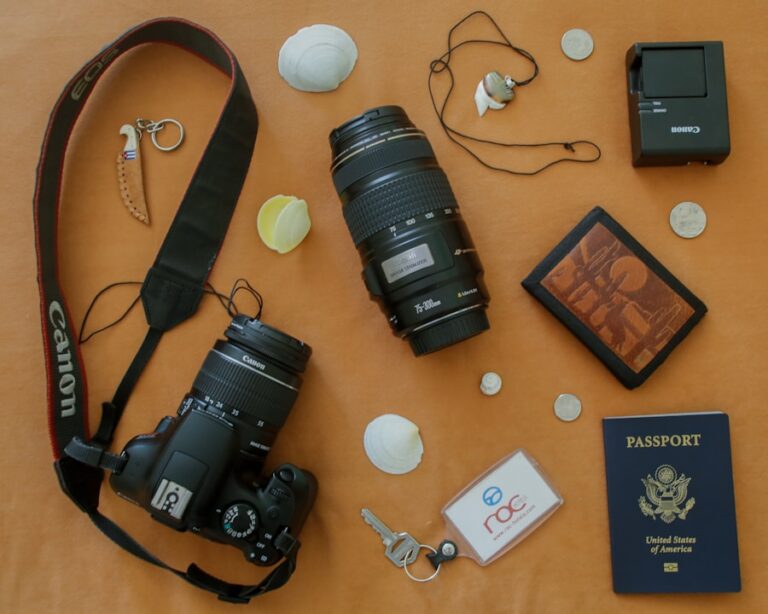In recent years, social media content consumption has shifted significantly towards visual formats. Platforms such as Instagram, Pinterest, and Snapchat have spearheaded this trend. Research indicates that visual content is 40 times more likely to be shared on social media compared to other content types.
This is attributed to visual content’s higher engagement, ease of consumption, and ability to evoke emotions more effectively than text alone. Consequently, businesses and brands have adapted their social media marketing strategies to incorporate more visual elements, including images and videos, which have become central to successful social media campaigns. The increasing prevalence of mobile device usage has also contributed to the rise of visual content.
As more users access social media via smartphones and tablets, the importance of visually appealing and easily consumable content on smaller screens has grown. This trend has led to the success of visually-focused platforms like Instagram and the integration of visual elements into established platforms such as Facebook and Twitter. As a result, businesses have been compelled to reevaluate their social media strategies, placing greater emphasis on creating visually compelling content that resonates with their target audience.
The shift towards visual content in social media has fundamentally altered how brands interact with consumers, making visual storytelling a crucial component of modern marketing efforts.
Key Takeaways
- Visual content is on the rise in social media, with platforms like Instagram and Pinterest gaining popularity.
- Visual storytelling has the power to captivate and engage audiences in a way that text alone cannot.
- Infographics play a crucial role in social media engagement by presenting complex information in a visually appealing and easy-to-understand format.
- Videos and live streams have a significant influence on social media engagement, offering a more immersive and interactive experience for users.
- Memes and GIFs have a strong impact on social media engagement, often going viral and creating a sense of community among users.
The Power of Visual Storytelling
The Universal Language of Visuals
This is because visuals have the ability to transcend language barriers and communicate universal themes that resonate with people from all walks of life. As a result, visual storytelling has become an integral part of successful social media marketing strategies.
Capturing Attention in a Crowded Landscape
One of the key reasons why visual storytelling is so powerful is its ability to capture and hold the attention of consumers. In today’s fast-paced digital world, people are constantly bombarded with information, making it increasingly difficult for brands to cut through the noise and capture their audience’s attention. Visual storytelling provides a solution to this problem by creating content that is visually stimulating and emotionally engaging.
Creating a Lasting Impression
Ultimately, the power of visual storytelling lies in its ability to create a memorable and impactful brand narrative that resonates with consumers long after they have engaged with the content.
The Role of Infographics in Social Media Engagement

Infographics have become an increasingly popular tool for brands looking to engage their audience on social media. These visually appealing graphics combine images, charts, and text to present information in a way that is easy to understand and visually compelling. As a result, infographics have proven to be highly effective at capturing the attention of social media users and conveying complex information in a digestible format.
This has made them an invaluable asset for brands looking to educate their audience, showcase their expertise, and drive engagement on social media platforms. The role of infographics in social media engagement can be attributed to their ability to present information in a visually appealing and shareable format. Unlike traditional text-based content, infographics are more likely to be shared and re-shared by users, making them an effective tool for increasing brand visibility and reach on social media.
Additionally, infographics are highly versatile and can be used across various social media platforms, including Facebook, Twitter, and LinkedIn. This allows brands to maximize the impact of their infographics by reaching a wider audience and driving engagement across different channels. Ultimately, the role of infographics in social media engagement is undeniable, as they continue to be a valuable asset for brands looking to create compelling and shareable content.
The Influence of Videos and Live Streams on Social Media Engagement
Videos and live streams have become a dominant force in shaping social media engagement. With platforms like YouTube, Facebook Live, and Instagram Stories gaining popularity, video content has become an essential component of successful social media marketing strategies. The influence of videos and live streams on social media engagement can be attributed to their ability to capture the attention of users and convey information in a dynamic and engaging format.
This has made them an invaluable tool for brands looking to connect with their audience, showcase their products or services, and drive meaningful engagement on social media. One of the key reasons why videos and live streams have such a significant influence on social media engagement is their ability to create an immersive and interactive experience for users. Unlike static images or text-based content, videos and live streams have the ability to transport users into the world of the brand, allowing them to experience the content in real-time or at their own pace.
This creates a more personal and authentic connection between the brand and its audience, leading to higher levels of engagement and interaction. Additionally, videos and live streams are highly shareable, making them an effective tool for increasing brand visibility and reach on social media platforms. As a result, the influence of videos and live streams on social media engagement is undeniable, as they continue to be a driving force behind successful social media marketing campaigns.
The Impact of Memes and GIFs on Social Media Engagement
Memes and GIFs have become a staple of social media culture, playing a significant role in shaping engagement on platforms like Twitter, Facebook, and Instagram. These humorous and relatable visual elements have proven to be highly effective at capturing the attention of users and driving meaningful interactions on social media. The impact of memes and GIFs on social media engagement can be attributed to their ability to evoke emotions, create a sense of community, and foster lighthearted interactions between brands and their audience.
This has made them an invaluable asset for brands looking to inject personality into their social media presence and connect with their audience in a more casual and relatable manner. One of the key reasons why memes and GIFs have such a significant impact on social media engagement is their ability to create shareable and relatable content that resonates with a wide audience. By tapping into popular culture and current events, brands can leverage memes and GIFs to create content that is relevant and timely, increasing the likelihood of it being shared by users.
Additionally, memes and GIFs are highly versatile and can be used across various social media platforms, allowing brands to maximize their impact by reaching a wider audience. Ultimately, the impact of memes and GIFs on social media engagement lies in their ability to create lighthearted and relatable content that fosters meaningful interactions between brands and their audience.
The Importance of High-Quality Images in Social Media Marketing

The Power of Visual Storytelling
The importance of high-quality images in social media marketing can be attributed to their ability to convey brand identity and values in a visually compelling way. By using high-quality images, brands can showcase their products or services in the best possible light, creating a positive association with their audience.
Increased Visibility and Reach
Additionally, high-quality images are more likely to be shared by users, increasing brand visibility and reach on social media platforms. This makes them an invaluable asset for brands looking to stand out in a crowded digital landscape and leave a lasting impression on their audience.
Driving Meaningful Engagement
Ultimately, the importance of high-quality images in social media marketing lies in their ability to create visually compelling content that resonates with users and drives meaningful engagement.
The Future of Visual Content in Social Media
The future of visual content in social media looks promising as platforms continue to prioritize visual elements in their user experience. With the rise of augmented reality (AR) filters on platforms like Instagram and Snapchat, as well as the integration of video content on platforms like TikTok, it is clear that visual content will continue to play a significant role in shaping social media engagement. Additionally, advancements in technology such as virtual reality (VR) are likely to further enhance the immersive nature of visual content on social media platforms.
Furthermore, as artificial intelligence (AI) continues to evolve, we can expect more personalized and interactive visual content experiences on social media. AI-powered tools will enable brands to create tailored visual content that resonates with individual users based on their preferences and behaviors. This level of personalization will further enhance user engagement with visual content on social media platforms.
In conclusion, visual content has become an integral part of successful social media marketing strategies due to its ability to capture attention, evoke emotions, and drive meaningful engagement with users. As technology continues to advance, we can expect visual content to play an even larger role in shaping the future of social media engagement. Brands that prioritize high-quality visual storytelling through images, videos, infographics, memes, GIFs, and live streams will be well-positioned to connect with their audience in a meaningful way and stand out in an increasingly competitive digital landscape.
If you’re interested in the impact of visual content, you may also want to check out this article on the advantages of owning a Shoei motorcycle helmet. The Advantages of Owning a Shoei Motorcycle Helmet discusses how the design and visual appeal of the helmet can impact safety and overall riding experience.
FAQs
What is visual content on social media?
Visual content on social media refers to any type of content that is primarily visual in nature, such as images, videos, infographics, and memes. This type of content is designed to capture the attention of users and convey information or messages through visual means.
How does visual content impact social media engagement?
Visual content has been shown to significantly impact social media engagement by increasing the likelihood of likes, shares, comments, and overall interaction with posts. Visual content is more likely to grab the attention of users as they scroll through their social media feeds, leading to higher engagement rates compared to text-only posts.
Why is visual content important for social media marketing?
Visual content is important for social media marketing because it has the power to convey messages and evoke emotions more effectively than text alone. It can help brands to stand out in a crowded social media landscape and create a more memorable and impactful impression on their audience.
What types of visual content are most effective for social media engagement?
Various types of visual content can be effective for social media engagement, including high-quality images, engaging videos, visually appealing infographics, and relatable memes. The most effective type of visual content may vary depending on the target audience and the specific social media platform being used.
How can businesses use visual content to improve social media engagement?
Businesses can use visual content to improve social media engagement by creating visually compelling and relevant content that resonates with their target audience. This can include showcasing products or services, sharing behind-the-scenes glimpses, and leveraging user-generated content to foster a sense of community and connection with their followers.




